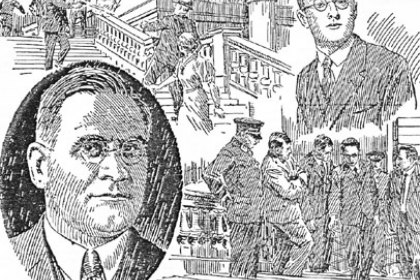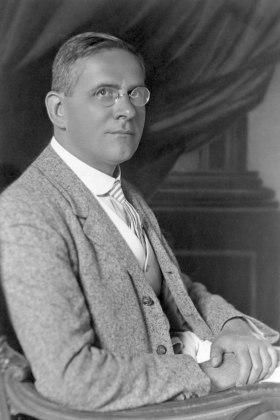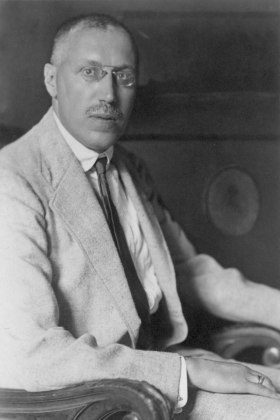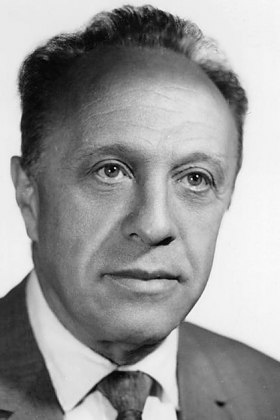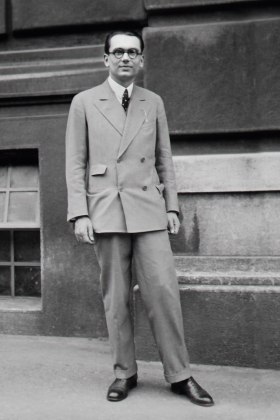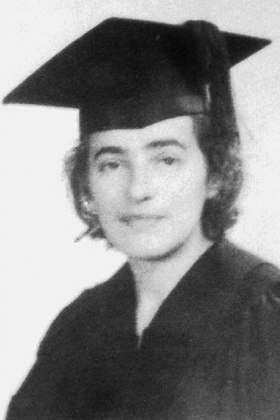The “Vienna Circle” („Wiener Kreis“)
The “Wiener Kreis” (“Vienna Circle”) was an extraordinary group of philosophers, mathematicians, natural scientists, and humanities scholars who met regularly between 1924 and 1936 to develop and to propagate a scientific world view. They attempted to combine questions of natural science with those of philosophy so as to create a new, professionally independent scientific theory. Vienna had become their center in the German-speaking world, since several of the circle’s representatives from Germany, such as Rudolf Carnap or Moritz Schlick – one of the first people to recognize the eminent philosophical importance of Einstein’s theory of relativity – also had been living and teaching here since 1922 and 1925, respectively. The scientists from the fields of philosophy, mathematics, and natural and social sciences that congregated in Vienna, from today’s point of view, represent one of the internationally most important philosophical movements of the 20th century.
Foundation and development
In 1924, philosopher Moritz Schlick, mathematician Hans Hahn and social reformer Otto Neurath founded a philosophical circle in Vienna to develop and propagate a scientific world view. Periodically, philosophical questions were discussed here:
What characterizes scientific insight? Are metaphysical statements useful? What does the certainty of logical statements rely on? How can one explain the applicability of mathematics?
Young thinkers such as the philosophers Rudolf Carnap, Friedrich Waismann and Edgar Zilsel, logician Kurt Gödel and the mathematicians Karl Menger and Olga Taussky became members of the Vienna Circle. In total there were 20 core members. About 50 scientists were on the periphery of the so-called Schlick-circle, such as Karl Popper, Oskar Morgenstern, Hans Kelsen or Karl Bühler.
The Circle quickly became a stronghold of logical positivism. Its development had begun with the scientific revolutions around the turn of the century, particularly with the theory of relativity. It oriented itself towards Albert Einstein, Bertrand Russell and Ludwig Wittgenstein. As an anti-metaphysical unified science its scientific and sociopolitical goals were unmistakable.
In 1929 the Vienna Circle began operating publicly via the “Verein Ernst Mach” (“Ernst Mach Society”). It quickly became a red rag for the anti-Semitic and reactionary forces at the University of Vienna. The empiricist “Wissenschaftliche Weltauffassung” (“Scientific World View”) – the title of the circle’s first manifesto in 1929 – and the use of the modern symbolic logic for the language analytical “surmounting of metaphysics through logical analysis” stood against German idealist philosophy. More than that, they were a provocation to the fundamentalist holistic teachings and traditional system philosophies in the form of Catholic and German-nationalist ideologies. Furthermore, the personal commitment of the so-called “left wing” of the Vienna Circle (Hans Hahn, Philipp Frank, Rudolf Carnap, Otto Neurath, Edgar Zilsel), as well as the individualistic liberals of this internationally networked scientific group (Moritz Schlick, Friedrich Waismann, Karl Menger, Felix Kaufmann) was enough of a reason for the academic and political elites to identify logical positivism, with its aspiration to democratize the sciences and thus society, as an enemy of their anti-democratic feelings. Under the increasingly difficult political conditions, a dissolution process began in the Vienna Circle. Meanwhile, logical positivism had seen a considerable internationalization beginning in 1930.
Disbandment, emigration and exile
In 1934, one of the founding members and leading figures of the Vienna Circle, Hans Hahn, died. The Ernst Mach Society was banned after the February fights and Otto Neurath had to flee into exile. Moritz Schlick's murder on the Philosophenstiege (philosophers’ staircase) in 1936 was a symbol for the ruling cultural climate and the subsequent “demise of scientific reason”. It was justified in the media as a consequence of Schlick’s “corruptive philosophy” of positivism.
The Vienna Circle dissolved, but its members continued working internationally: Through the enemy images dominant in Austrofascism and National Socialism, “liberalism”, “Austromarxism” and “scientism” in the ideologemes of racism and anti-Semitism there had been a slow but steady knowledge and science transfer and a gradual cultural exodus since the beginning of the 1930s. The “brain drain” – the displacement of the predominantly Jewish members of the Vienna Circle – began relatively early and reached its peak after the “Anschluss” in 1938. Apart from a few exceptions, this early internationalization shaped the form and course of emigration as well as the non-existent return of the Vienna Circle. Even just the scale of emigration paints a picture of a losing record. From 1931 to the beginning of the Second World War, 13 of the 20 core members of the Vienna Circle emigrated for political, economic and cultural reasons, especially because of the increasing racism.
Knowledge transfer and further development
Among others, six international conferences on the unity of science between 1935 and 1941 offered an intellectual and institutional framework for the enhanced cultural transfer after 1930. The most important receiving country was the United States. Early on, the Vienna Circle showed cognitive and institutional presence there: In the course of the international cooperation of the Congress for the Unity of Science, the ambitious publication project of the “International Encyclopedia of Unified Science” was started in 1938 under the lead of Otto Neurath, Rudolf Carnap and Charles Morris. It was finally concluded as an uncompleted undertaking with a total of 19 monographies under the title “Foundations of the Unity of Science” in 1962. Parallel to this, the immigrated science philosophers sought interdisciplinary discussion in Harvard beginning in 1940, which was continued in the Institute for the Unity of Science (1947-1958), founded and led by Philipp Frank, together with US-American organizations at conferences and in publications on the subject of “Science and Culture – Science as Culture”.
The different refuges of the Vienna Circle document a complex and differentiated theory development as a consequence of the knowledge transfer. This was combined with personal stories: the revolutionary pioneering work on formal logic as well as game and decision theory done by Kurt Gödel and Oskar Morgenstern at the Institute for Advanced Study in Princeton saw great acknowledgement in an international context and discourse. While Richard von Mises was able to successfully transfer and continue his life’s work in the field of applied mathematics and scientific theory, the philosopher and science sociologist Edgar Zilsel failed in his exile. The historicization and sociologization of modern science only later became transparent through reprints of his work. A similar fate befell the Austrian contribution to psychology and psychoanalysis in California. The traditions of the Bühler School and the Vienna Circle taught there by Egon Brunswik and his wife Else Frenkel-Brunswik are only marginal when viewed from today’s perspective.
The indirect group biographical importance of the Vienna Circle in American social science and social theory can especially be seen in the significant influence of Oskar Morgenstern, Marie Jahoda and Paul Lazarsfeld, as well as of Felix Kaufmann and Alfred Schütz. Their influence in formulating American scientific philosophy which began professionalizing itself in the 1930s seems to also have been foundational. The scientific theoretical approaches of the Vienna Circle experienced profound changes in emigration – changes towards de-politicization, liberalization and academization – not least because the cultural context for a combative and popularizing “scientific world view” went astray in exile.
Despite the low remigration rate and the fact that not a single member of the Vienna Circle returned to Vienna, a significant ideational transfer back can be recorded. For example, with the establishment of the European Forum Alpbach in 1945, a platform was founded outside of the academic institutions which offered a discussion circle for the former emigrants (Rudolf Carnap, Herbert Feigl, Philipp Frank and Karl R. Popper). The conflict-laden foundation of the Institute for Advanced Studies in Vienna in 1963 by the emigrants Paul Lazarsfeld and Oskar Morgenstern meant a return of scientific theory as well as the introduction of modern social sciences. In the course of this development, scientific theory has established itself since the end of the 1960s at the Universities of Graz, Salzburg, Innsbruck, Linz and finally Vienna. The establishment of the Institute Vienna Circle must finally also be placed in this context. Since 1991 it has dedicated itself to the historical reconstruction and critical development of the “scientific world view” that was begun in Vienna.
In the context of the 650-year anniversary of the university, an exhibition on the Vienna Circle is was held in the University of Vienna’s main building from May 20 to the end of October 2015.
-

Der Wiener Kreis: Manifest „Wissenschaftliche Weltauffassung“, September 1929
-

Entrance of the Mathematical Seminary, Boltzmanngasse. – Here the meetings of the Vienna Circle were held.
-
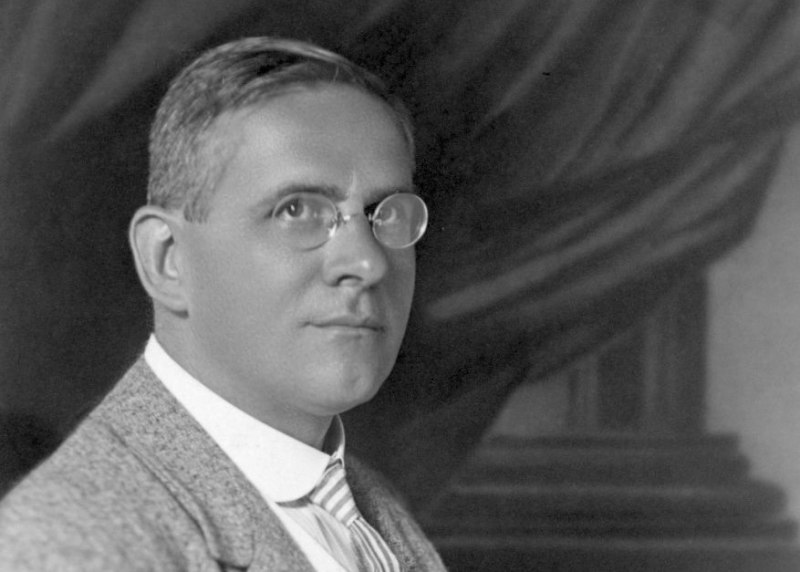
Moritz Schlick, founder of the “Wiener Kreis” (“Vienna Circle”)
-
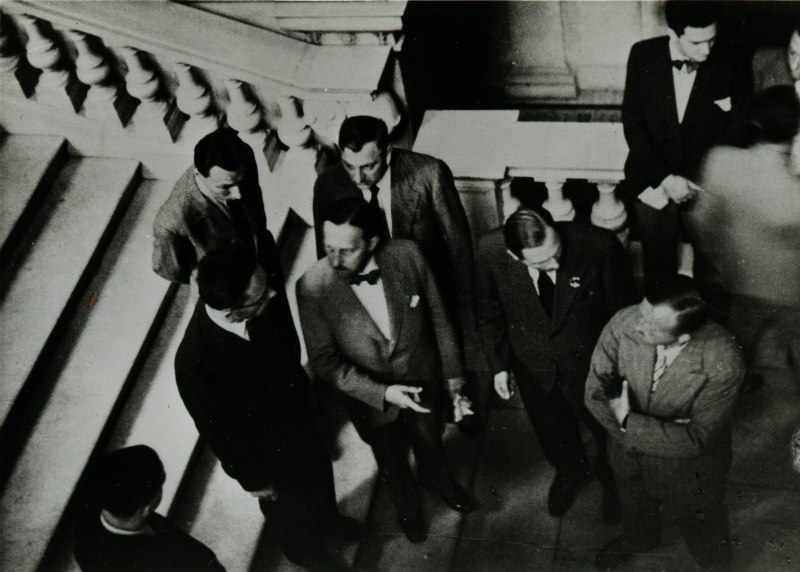
Murder of Moritz Schlick: Court Commission at the crime scene inspection, in the middle the murderer Johann Nelböck
-

Inscription to remind on the murder of Moritz Schlick on the Philosophenstiege (philosophers’ staircase) of the University of Vienna in 1936, built in 1993
Text of the inscription at the place, where Moritz Schlick was shot: "Moritz Schlick, Protagonist des Wiener Kreises, wurde am 22. Juni 1936 an...
Zuletzt aktualisiert am : 06.12.2023 - 23:12
-
Der Mord an Prof. Moritz Schlick
22nd.6.1936

